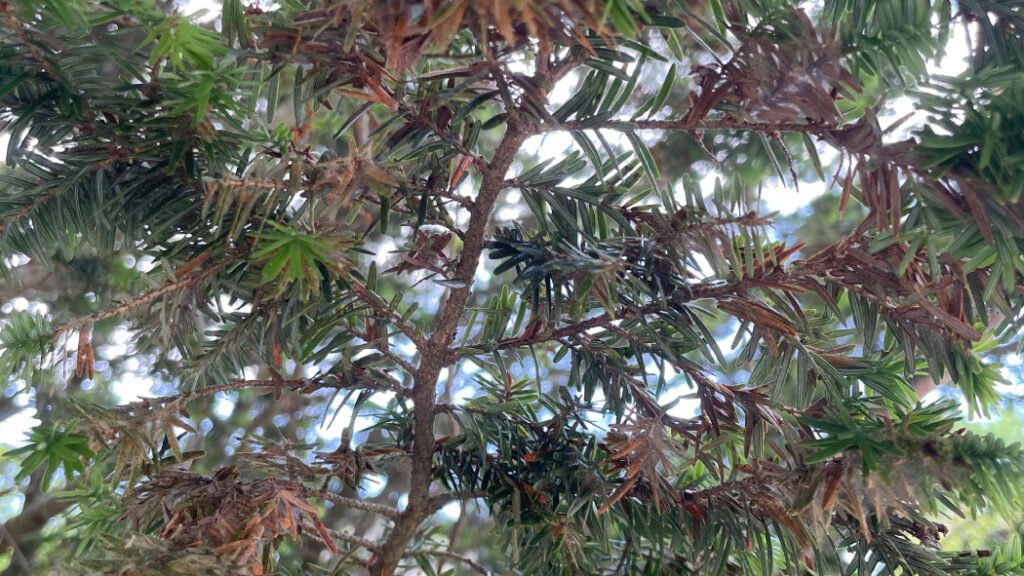We spend a lot of time talking about insects, but did you know that there is another nasty pest that causes problems in the garden. Today we are talking about mites!
But Susan, Are mites’ insects?
Mites are not insects. They are different animals all together. Mites are part of the arachnid family (Yes, mites are spiders). They have eight legs and leave webbing over many ornamental trees and shrubs. Thus, many insecticides do not work on mites.
What is eating my tree? Is it insects or mites?
Mites leave their calling card, which is fine to thick webbing on your tree’s needles and leaves. In bad cases it can be thick like the picture above. The picture above shows a very heavy infestation of hemlock rust mites. It is important to note that not all webbing is mites, some webbing is caused by predatory spiders. If you’re not sure, check with a certified arborist. Insects don’t usually make webbing (some caterpillars due) and most are visible to the naked eye. Mites are incredible tiny and often difficult to see.
Why are mites bad?
Mites can be hard on your ornamental trees and shrubs because they suck out the chlorophyll that is needed by the trees to photosynthesis. The lack of chlorophyll, due to mites, leaves behind yellow stippling on the leaves and needles of infected trees and shrubs plants. The look can present itself as distorted or discolored. Photosynthesis is of course how trees make their food so they can grow and repair wounds. Generally, infestation of mites is a sign that trees are stressed from improper cultural practices or other environmental issues. An arborist can help diagnosis, treat, and course correct some cultural issues leaving with a more vibrant and healthy landscape.
When should I be on the lookout for mites?
Some mites are cool season (like the Hemlock Rust Mite pictured above) and some are warm season. If we have any extended cool spring season with minimal rain then we can have an increase in the number of mites as favorable cool weather will mean that they can support more generations (a.k.a. lots and lots of babies, think rabbits on steroids). Rain can make it, so mites have a harder time mating. Lack of rain means that it is easier for them to get together. April – June is the time when cool season mites are most active. Populations of cool season mites will dwindle when summer temperatures increase.
How do we treat mites?
As a result of mite’s rapid reproduction rates, it means that mites can become resistant to miticides if over or under used. Thus, it is important to work with a professional arborist with a pesticide applicators license that is properly trained to use the right measurements, timing, and varies their material to prevent a miticide resistant population of mites.


